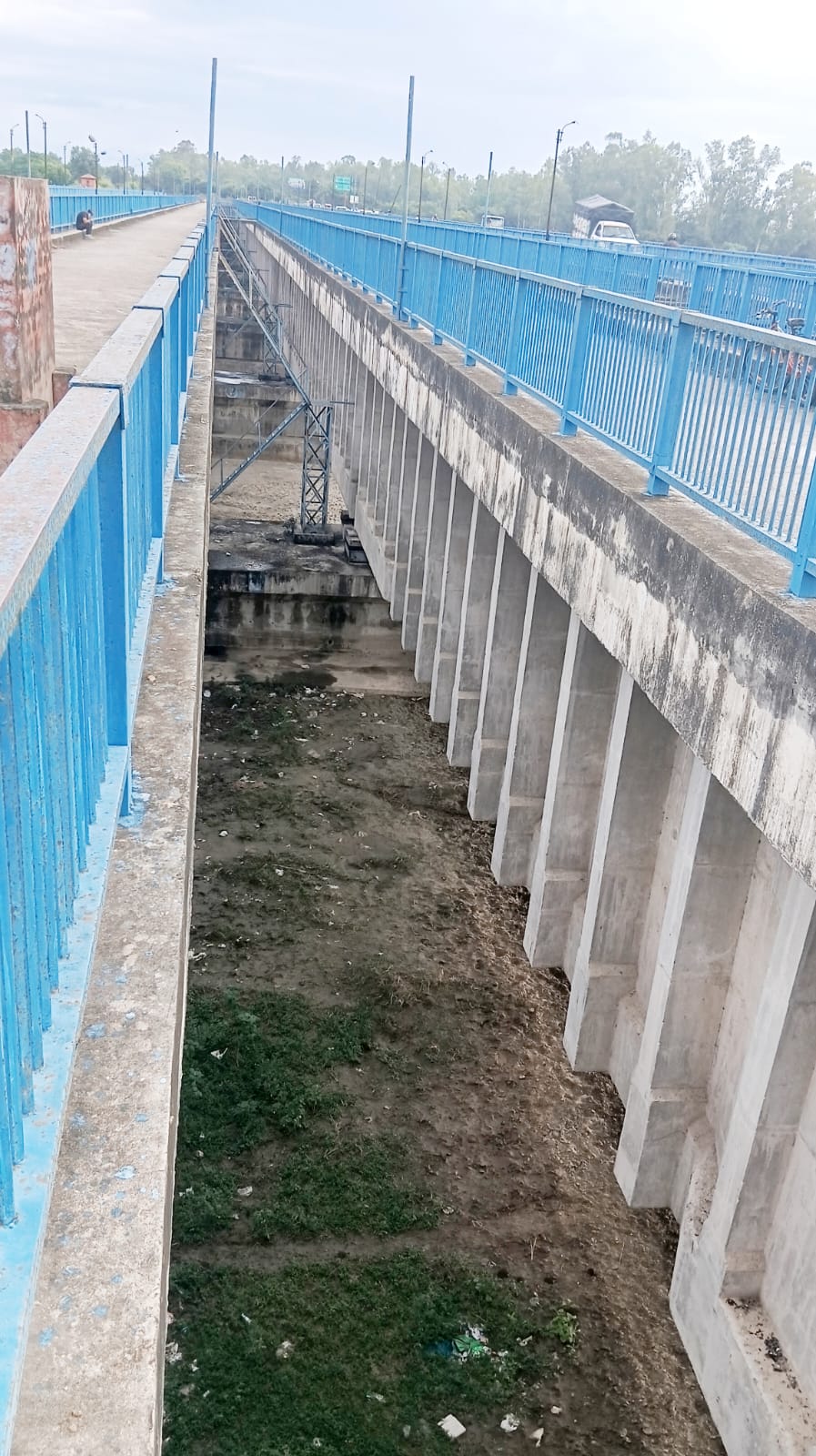By
Kaushal Kishore
Materials Engineer, Roorkee
The new Solani aqueduct on Ganges canal Roorkee was built with prestressed concrete which allows for longer spans and a simple more robust design compared to old bricks, lime- surkhi mortar masonry arches of the old aqueduct, in which 8.5 crores bricks were used, while iron railing used in the sides of two lanes were imported from England. This is interesting to note that materials bringing those days on ship from England to Indian ports take 6-10 weeks via the Suez canal or 3 to 6 months via the longer Cape of Good Hope. Calculate in it also time taken on road from Indian ports to Roorkee.
After retirement from University of now IIT Roorkee I joined M/S Roffe Construction Chemicals Pvt.Ltdd, Mumbai as it’s Chief Concrete Technologists afterwards I became it’s one of the Director.

AQUEDUCT picture taken on 7/10/2025
For the contractor of above aqueduct I designed M-40 grade of concrete with Roffe superpladticizer. Those interested may read my paper by visiting Google site and log in; Civil engineering portal The Ganges canal by Kaushal Kishore.
I had designed numerous concrete mix design almost all cements of India in this I find Utra Tech cement as one of best cement OPC and PPC both With Ultratech cement I had designed numerous concrete mixes from ordinary strength to M-80 grade concrete, self compacting concrete, shot crete concrete, fibre reinforced concrete, fly ash concrete and more There is life after retirement and after retirement I worked for 30 year’s which includes in free time working in home research and testing laboratory and numerous construction sites visits almost all India and outside India. At my age of 92 years I still work for 12 hours daily.
I had never worked for money. In spite of doing so gigantic work what to say about car I even do not have 2 wheeler not any of my house not a single inch of land in this world only pension from IIT Roorkee and few clothes

























can somone please tell me how to design pile for tall building in ETABS???
i want to join correspondence course of civil engineering my qualification is intermediate so plz give full details of civil engineering by
correspondence.
sir,
plz help me out in selecting a project for my final year engg in accordance to the present trend and need and also please specify the branch of civil engg for which there is great demand
dear sir
whether a circular rcc column can be replaced by a rectangular column
or not. send me the detail calculation.
please send me free soft wear for marshall mix design.
presently i am a btech first year student of itggu bilaspur, iwant to know the scope of
civil engg in govt jobs
hi, sir,
right now im studying in university located in malaysia.
im just wondering the statistic in my course that could get the job after finishing the study. do this course ensure my job?
dear sir,
I am studiying in diploma in civil engineering. pls give me projuct work (detail for making projuct work)
dear sir i need to ask that will i need to work with autocad in bsc civil engineering? if it is so, then in which year will i get to work with it?
thanks..
hi! currently i m doin b. tech in civil engineering 2nd year.. i want to know about the languages like autocad. that ls how much important for a civil engg..and other courses for civil engg may be helpful for a civil engineer..?
Effect of fly ash on properties of concrete……
Hey guys….
I need some help……
Can anyone please provide me any data regarding the topic “EFFECT OF FLY ASH on COMPRESSIVE STRENGTH & SLUMP of Concrete”……
It wud be of gr8 help…….it can be anything,,,journal, thesis, conference papers…..but with sufficient data, i.e. Various proportions used for determining slump n compressive strength when fly ash is replaced with cement.
I need standard proportions, not mixed design ones…..
Please guys, help me out,,,,,its urgent…..I need it desperately…..:(
Can any one send me the link of NBC 2005
Dear all any one know information for construct compound wall (not concrete wall) calculation procedure or any website link or any online book is available ….
thanks…
how to do planning of building and colony?
Please I need you immeduate attention on this matter.
I am an engineering student at Universiti Tenaga Nasional In Malaysia, I would like to know if this university is accredited. Please send me a list of accredited Universities that offer civil engineering in Malaysia.
Your imediate response is highly appreciated in this matter.
Regards
hi i am sudhir i want to take up civil engineering(construction) as a profession.
presently i am busy with B.P.0 sector now i am looking for the change.So i want to
know is there any instiute for those people who presently working and
want to take diploma in civil engineering(construction) through part time institute.Waiting for replyo
one more thing i forgot to mention i am looking for shorterm coure.Course duration could be
one year thaks
I’m a BSC graduate in Civil Engineering and I’m interested still to continue with the same field in the specialization of structural Engineering. Please show me the possible sites for my study specially in Europe.
i want to automatize and parallelize processes which are still done by hand and sequential (or automatized and sequential).
Dear Sir!
I am international student.Now i am studying Korean language course Begineer Level at Inha University. After 1 year,i can join Master Course & i want to join my Master Course in here.So i want to know that “Is there have class teaching in English for Master Course of Civil engineering ?”. Please can you give me advice?
Sir,
Pls show me how we calculate the qty of materials
for 1m3 concrete using 1:1.5:3mix